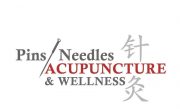February is American Heart Health Month and it is a great month to focus on becoming aware of heart health. Heart disease is the leading cause of death in the United States and has been for years. The best way to prevent heart disease is by applying early detection methods and treating them accordingly. I would challenge everyone to make it a priority in the month of February to consider the following methods for detecting heart disease and taking the appropriate steps to identify your heart health.
- Blood Pressure– Considered a basic vital test, blood pressure identifies the amount of pressure pushing against the walls of vessels as it circulates through the body. Testing blood pressure is a quick and simple procedure that everyone should take advantage of knowing. Healthy blood pressure is important as it relates to how hard your heart is working. While it is expected to work harder during exercise (which is healthy) it should remain at a rate of 120/80 or less at rest. For American Heart Month our office is offering complimentary blood pressure screenings!
- Pulse– Another basic vital sign, measuring a pulse is a simple procedure that literally takes a minute! By feeling the inside of the wrist on the thumb side you can palpate the radial pulse. By simply counting how many beats you feel for 1 minute (or multiply it by 2 after 30 seconds) you can assess your pulse. A resting pulse for a normal adult can range between 60-100 and is another indicator of how hard your heart is working. If the pulse is consistently high or low it is something to discuss with a doctor. There are many other aspects to a pulse to consider but as a baseline, the number of beats per minute is “vital” to know. If you are interested in the many other aspects of the pulse, ask your local acupuncturist!
- Total Cholesterol– Cholesterol is an important part of building healthy cells and is found within the bloodstream. A normal amount is great! However, an increased amount of cholesterol can increase the risk of heart disease. High cholesterol, unlike the previous two markers, does not have any associated symptoms when it is present. The only way to accurately assess cholesterol is through a blood lipid panel. This is a simple test and depending on the patient’s age and previous test results are recommended at different intervals. One standard acceptance is that total cholesterol over 200 should be addressed. Do you know your current cholesterol level?
- Other blood tests– Cholesterol is a common test taken that most people are at least familiar with. In fact, it is so well known that there are constant conflicting opinions on what aspects are important and how best to treat them among many health care practitioners. There are also other blood tests that work to assess cardiac health that should be considered during American Heart Month. Another example of a blood test that can be used to consider cardiac risks are CRP and Homocysteine. A C-Reactive Protein test isn’t a specific heart test. It is actually a test to measure inflammatory markers in the body. Elevated levels simply tell us there is inflammation…somewhere. That being said when taken into consideration with other factors (age, health history, lifestyle habits, family history). CRP isn’t done as commonly as Cholesterol screening however it can help with a better overall picture. There are also other blood tests such as homocysteine and fibrinogen that can be utilized to assess cardiovascular risks. It is important to discuss what tests are best suited to discover your heart health!

This is the first blog in an upcoming series for American Heart Month. Please be sure to subscribe or check back for more useful heart-related information throughout the month. Comments and suggestions are always welcome!

